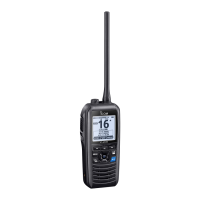44
10
9
15
18
13
11
16
14
12
17
1
7
4
2
8
5
3
6
10
AIS RECEIVER
■ About AIS
The Automatic Identication System (AIS) is primarily used for collision-risk management
and navigation safety. It may automatically transmit and receive vessel information, such
as the vessel name, MMSI code, vessel type, position data, speed, course, destination,
and more, depending on the class. Information is exchanged among vessels and/or base
stations on the VHF maritime mobile band. The information helps to identify other nearby
vessels or stations by displaying the received data on a plotter or a radar screen.
Other vessel
(Class B AIS)
Other vessel
(Class A AIS)
Vessel Information
Base Station
Your vessel
(Class B AIS)
■ AIS classes
There are 7 types of AIS stations, vessels, base stations, Search and Rescue (SAR),
Aids to Navigation (AtoN), Search and Rescue Transmitter (AIS-SART), Man OverBoard
(MOB), and Emergency Position Indicating Radio Beacon-AIS (EPIRB-AIS).
There are 2 classes of AIS units that are installed on vessels, Class A and Class B.
Under the Safety Of Life At Sea (SOLAS) convention, all SOLAS vessels are required to
install a Class A AIS transponder:
A Class B AIS transponder is designed to be interoperability with Class A units, but not to
impact the Class A network.
Many commercial vessels, and some leisure craft, not classied as requiring a Class A
unit, choose to install a Class B unit to avoid accidents at sea.

